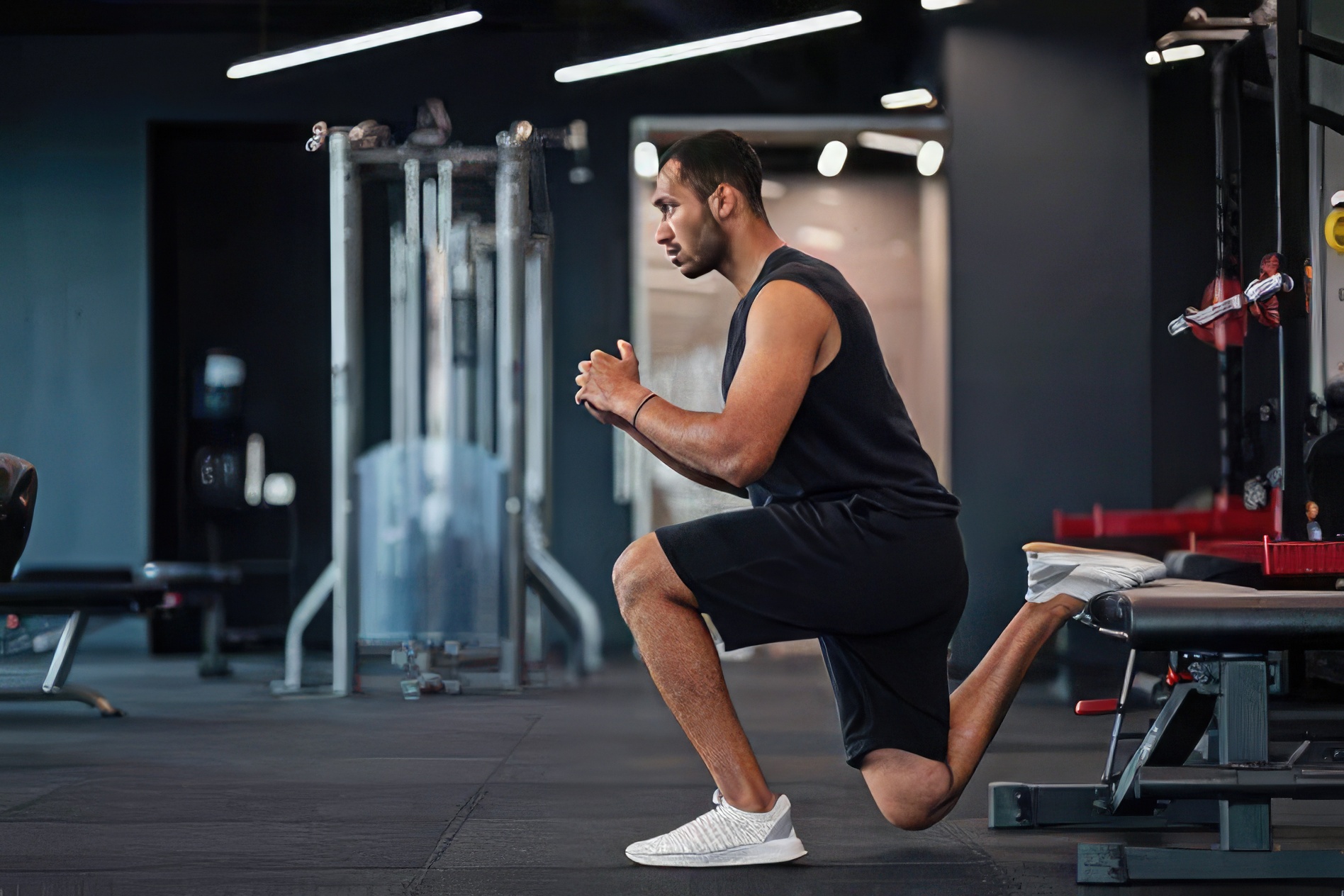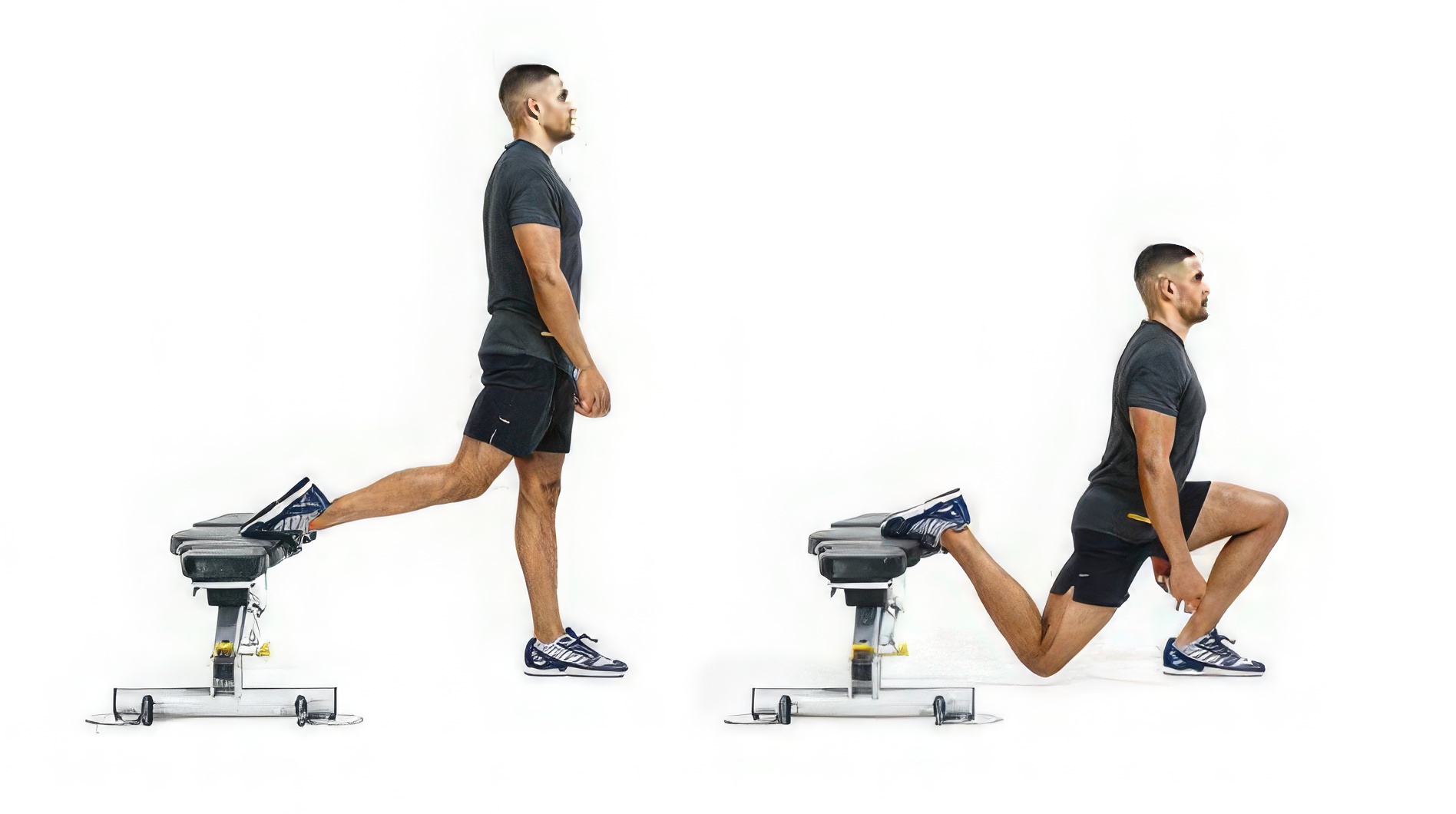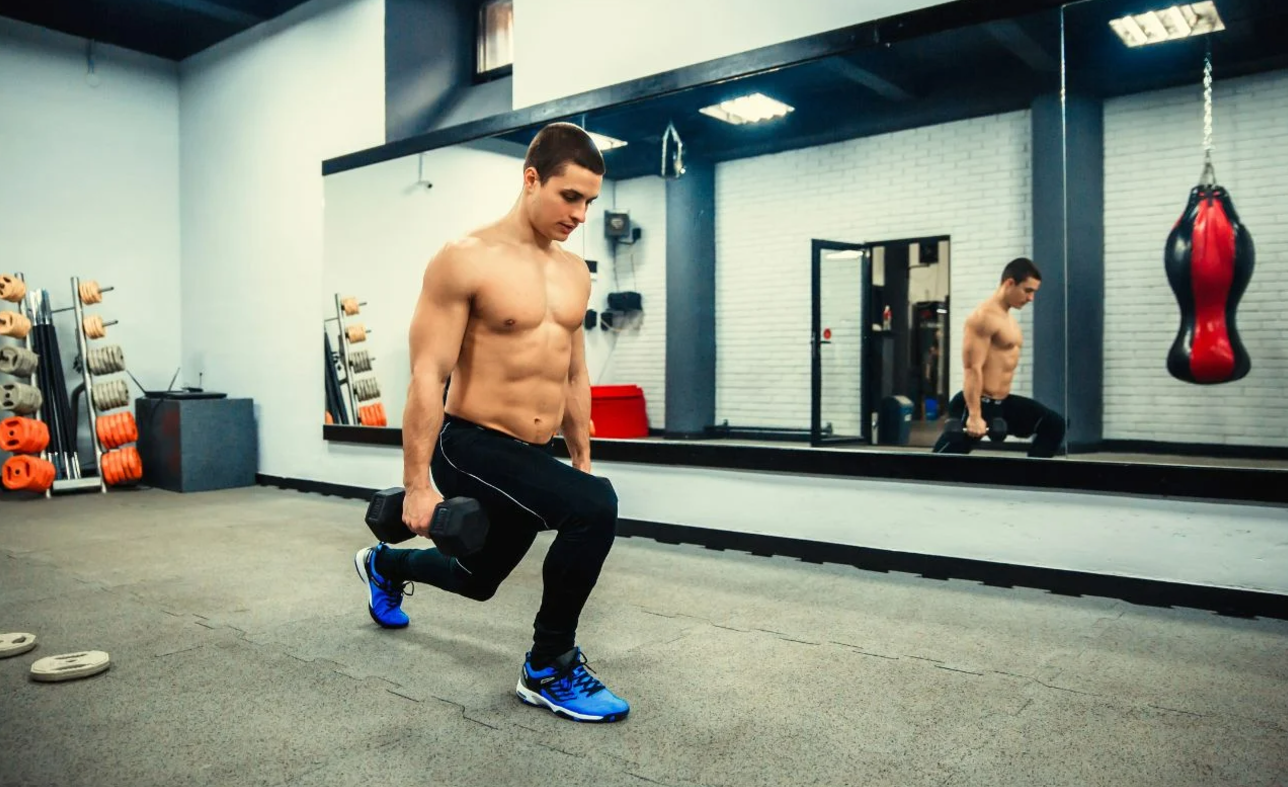
Split squat can be relied upon as an exercise to make your lower body stronger. This squat variation is also great for flexibility and balance if you do it regularly. Just make sure you do it the right way for better athletic performance.
About Split Squat
This is a type of squat that focuses on several leg muscles including the glutes, hamstrings, and quadriceps. These squats require your legs to be positioned behind and in front of your body. From that, we can tell that these squats are different from the usual squats that use both legs at the same time in the same position.
In practice, this squat focuses on the pressure of one leg. You can expect better body stability and balance with this squat variation.
How To Perform Split Squats Properly?

Because it’s different from conventional squats, you need to learn in detail how to perform this split variation. I’ve been doing split squats regularly, and this is the best practice for doing them:
1. Set up your best position
Position your feet at least hip-width apart and put your foot in front while the other foot behind. Your body should be upright, and look forward to starting the squat.
2. Lower your body properly
To lower the body, just bend the knees until the legs form a 90 angle. Then another important point is the knee behind make sure it almost touches the floor for a perfect position. During squats, your back should be straight or not bent.
Don’t let the knee in front go past the toes either as that can lower the quality of the squat. Be in full control when lowering your body, just do it slowly.
3. Proper movement to return to standing
Before you return to standing, make sure you hit the lows correctly on this split squat. To get to a standing position, push off on your heel (front foot). During practice, focus on good body control, and don’t forget to take it slow.
What are the Types of Split Squats?
You can do several variations of split squats to suit your available equipment or difficulty level. Here are some variations that you can consider:
1. Bulgarian variation
The difference from regular squats is that this variation uses a high surface such as a bench. The bench is used to place your back foot on. This position puts more weight on your front foot. If you want an intense leg workout, consider this squat variation.
2. Split Squat with Dumbbell & Barbell
You can do this squat with dumbbells or barbells. If you want to try the dumbbell variation, just hold a dumbbell at your level in both hands. At least squats like this can be more challenging.
Want a higher-intensity workout? You can replace your dumbbells with barbells. Choose a barbell according to your strength and place it over your shoulder (behind your neck).
3. Jumping Squat
Jump between each rep so you don’t get bored with the usual variations. If you manage to do this variation regularly, your leg muscle strength will increase faster. Make sure to do it carefully with a soft mat.
4. Bodyweight Variation
Bodyweight means you’re relying on your body weight alone with no additional weight. If you’re new to split squat, this is the ideal squat variation for you. You can also do this variation to warm up before taking it to the next level.
How Split Squats Can Benefit You?

Get better body fitness especially in the lower body by doing this squat. Your body will also become more stable as you continue your squat routine. For more details about the benefits of split squats, see some points below:
1. More stable and balanced body
It is important to have a stable and balanced body for daily activities. Unlike the usual squat, this split variation means using only one leg at a time. As you practice this split more often, you’ll be able to achieve a stable and balanced body.
2. Improved overall leg muscle strength
Many leg muscles are targeted in this split squat exercise so you can expect stronger leg muscles in some areas. Some of the muscles that are the main focus are the calves, glutes, quadriceps, and hamstrings.
Not only good for the leg muscles, these squats can also improve the core muscles while lowering the body.
3. Balances right and left muscles
The balance of the right and left muscles in the legs is very important and these squats can help with that. You can do squats separately for both legs. Make sure to do them with the same intensity between the two so that the muscles increase equally.
4. The body becomes more flexible
Certain squat variations can better support flexibility. For example, the Bulgarian variation can make your hips and hamstrings flexible.
These are the main guidelines for doing squats. To avoid injury during the session, you need to make sure your body doesn’t lose balance. A weight that is too heavy may throw your body off balance.
If you are a beginner, it is recommended to consider lightweights first. Try practicing balance with these weights and then if you feel it is optimal, you can increase to heavier weights. Also, make sure your back is not bent during the entire exercise. For a more focused split squat training program, you can explore other variations.

FAQs
What is a split squat?
This is a variation on the squat exercise that targets the glutes, and thigh muscles. Unlike the usual ones, this squat places one leg behind and the other in front in one session.
What are the basic techniques in split squats?
Start by placing one foot behind the body and the other in front in a standing body position. Slowly bend the knee of the back leg until the guts touch the floor and return to standing.
Are split squats better than lunges?
Both exercises are similar and have effective benefits but the focus is not the same. Lunges make your body move dynamically while squats focus more on leg muscle performance with constant pressure.
How to keep split squats from injuring?
Avoid excessive weight if you want to explore variations of squats. Focus on body stability during the session, making sure to keep your back straight for a perfect split squat.

Guntur is a bodybuilding and powerlifting enthusiast. He is also the main author of this blog https://learn-bodybuilding.com/
Guntur also works as a Personal Trainer in his town.
In his free time, he likes to learn new languages and reading.
You can contact him from this website’s Contact Page.